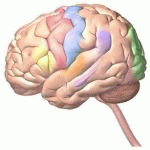Neurology
|
18 april 2014 16:51:27 |
| Quantitative assessment of upper limb motor function in Multiple Sclerosis using an instrumented Action Research Arm Test (Journal of NeuroEngineering and Rehabilitation) |
|
Tweet Background:
Arm impairment in Multiple Sclerosis (MS) is commonly assessed with clinical scales, such as Action Research Arm Test (ARAT) which evaluates the ability to handle and transport smaller and larger objects. ARAT provides a complete upper limb assessment, as it considers both proximal arm and hand, but suffers from subjectivity and poor sensitivity to mild impairment. In this study an instrumented ARAT is proposed to overcome these limitations and supplement the assessment of arm function in MS.
Methods:
ARAT was executed by 12 healthy volunteers and 21 MS subjects wearing a single inertial sensor on the wrist. Accelerometers and gyroscopes signals were used to calculate the duration of each task and its sub-phases (reaching, manipulation, transport, release and return). A jerk index was computed to quantify movement smoothness. For each parameter, z-scores were calculated to analyze the deviation from normative data. MS subjects were clinically assessed with ARAT score, Nine-Hole Peg test (9HPT) and Fahn Tremor Rating Scale (FTRS).
Results:
ARAT tasks executed by MS patients were significantly slower (duration increase: 70%) and less smooth (jerk increase: 16%) with respect to controls. These anomalies were mainly related to manipulation, transport and release sub-movements, with the former showing the greatest alterations. A statistically significant decrease in movement velocity and smoothness was also noticed in patients with normal ARAT score. Z-scores related to duration and jerk were strongly correlated with ARAT rating (r < -0.80, p < 0.001) and 9HPT (r < -0.75, p < 0.001) and were significantly different among MS sub-groups with different levels of arm impairments (p < 0.001). Moreover, Z-score related to manipulation-phase jerk was significantly correlated with the FTRS rating of intention tremor (r = 0.84, p < 0.001).
Conclusions:
The present study showed that the proposed method is able to discriminate between control and MS groups and to reveal subtle arm alterations not detectable from ARAT score. Validity was shown by high correlations between instrumental variables and clinical ratings. These results suggested that instrumented ARAT could be a valid quick and easy-to-use method for a sensitive quantification of arm function in MS. Inclusion of finger-mounted sensors could complement present findings and provide further indications about hand function in MS. |
| 89 viewsCategory: Neurology |
 Motor imagery of gait: a new way to detect mild cognitive impairment? (Journal of NeuroEngineering and Rehabilitation) Motor imagery of gait: a new way to detect mild cognitive impairment? (Journal of NeuroEngineering and Rehabilitation)Evaluation of EMG, force and joystick as control interfaces for active arm supports (Journal of NeuroEngineering and Rehabilitation) 
|
| blog comments powered by Disqus |
MyJournals.org
The latest issues of all your favorite science journals on one page
The latest issues of all your favorite science journals on one page



